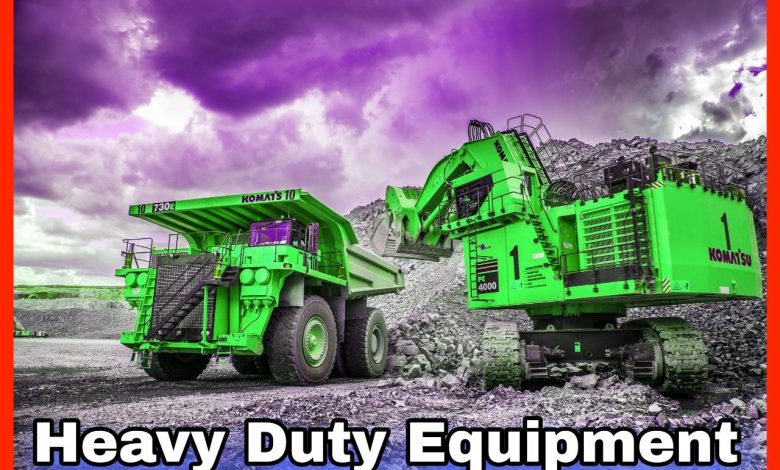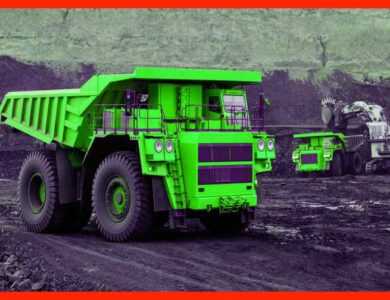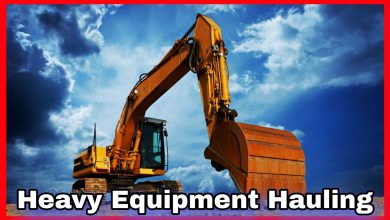
Heavy Duty Equipment: Powering Industries for Efficient Operations
The industrial sector relies heavily on heavy-duty equipment to carry out various operations efficiently. From construction sites to manufacturing plants, these robust machines play a crucial role in ensuring productivity and timely completion of tasks. This article explores the significance of heavy-duty equipment, their types, applications, and benefits, highlighting their indispensable role in powering industries worldwide.
Overview of Heavy Duty Equipment
Heavy-duty equipment refers to large and robust machinery specifically designed for demanding tasks in various industries. These machines are engineered to handle heavy loads, perform complex operations, and withstand challenging working conditions. Heavy-duty equipment plays a vital role in sectors such as construction, mining, agriculture, transportation, and manufacturing, where their power and efficiency are essential for smooth operations.Types of Heavy Duty Equipment
- Excavators: These versatile machines are used for digging, trenching, and material handling tasks. Excavators come in various sizes, from compact models suitable for urban areas to larger machines for heavy excavation projects.
- Bulldozers: Bulldozers are equipped with a wide, heavy blade mounted on the front, making them ideal for pushing large amounts of soil, debris, or rocks. They are commonly used in construction and land-clearing projects.
- Cranes: Cranes are essential for lifting and moving heavy objects in construction sites, ports, and manufacturing facilities. They come in different types, such as tower cranes, mobile cranes, and overhead cranes, each serving specific purposes.
- Forklifts: Forklifts are used for material handling and transportation within warehouses, distribution centers, and manufacturing plants. They feature a hydraulic lifting mechanism and are available in various capacities.
- Dump Trucks: These rugged vehicles are designed for transporting loose materials, such as gravel, sand, or construction waste. Dump trucks come in different sizes, including standard, articulated, and off-road models.
Applications of Heavy Duty Equipment
Heavy-duty equipment finds applications across diverse industries, including:- Construction: Heavy-duty equipment is vital for tasks like excavation, grading, lifting, and hauling construction materials. It enables efficient building construction, road development, and infrastructure projects.
- Mining: In mining operations, heavy-duty equipment such as excavators, bulldozers, and haul trucks are used for earthmoving, mineral extraction, and transportation of ores. These machines improve productivity and ensure safety in challenging mining environments.
- Agriculture: Heavy-duty equipment, such as tractors and combines, assists in various agricultural operations, including plowing, planting, harvesting, and crop handling. These machines enhance farm efficiency and increase yields.
- Manufacturing: Heavy-duty machinery is essential for manufacturing processes like material handling, assembly line operations, and equipment maintenance. Industrial robots and automated systems also fall under this category.
- Transportation: Heavy-duty trucks, trailers, and buses form the backbone of the transportation industry, facilitating the movement of goods and passengers across long distances.
Benefits of Heavy Duty Equipment
- Enhanced Efficiency: Heavy-duty equipment allows for faster and more efficient completion of tasks, reducing labor requirements and project timelines.
- Increased Productivity: These machines can handle larger workloads and perform complex operations, leading to improved productivity in industries that rely on them.
- Cost Savings: While the initial investment in heavy-duty equipment may be significant, it often results in long-term cost savings by reducing the need for manual labor and increasing operational efficiency.
- Versatility: Heavy-duty equipment is adaptable and can be fitted with various attachments and tools to perform multiple tasks, making them versatile across different industries.
- Safety: Modern heavy-duty equipment is designed with safety features, reducing the risk of accidents and injuries in the workplace.
Safety Measures for Operating Heavy Duty Equipment
- Proper Training: Operators should receive thorough training on equipment operation, safety protocols, and maintenance procedures to ensure safe operation.
- Regular Inspections: Regular inspections and maintenance checks are essential to identify and address any potential issues or faults with the equipment.
- Personal Protective Equipment (PPE): Operators must wear appropriate PPE, including helmets, safety glasses, gloves, and high-visibility clothing, to protect themselves while operating heavy-duty equipment.
- Clear Communication: Effective communication between equipment operators and other workers on-site is crucial to prevent accidents and maintain a safe working environment.
- Adherence to Regulations: Operators must comply with local safety regulations and industry standards to ensure the safe operation of heavy-duty equipment.
Maintenance and Service of Heavy Duty Equipment
- Routine Maintenance: Regular servicing, oil changes, and component inspections are necessary to keep heavy-duty equipment in optimal working condition.
- Timely Repairs: Any signs of wear, damage, or malfunction should be addressed promptly to avoid further complications and prevent downtime.
- Lubrication: Proper lubrication of moving parts is essential to minimize friction and extend the lifespan of heavy-duty equipment.
- Component Replacement: Worn-out or damaged components should be replaced with genuine parts to maintain the performance and safety of the equipment.
- Documentation: Maintaining comprehensive records of equipment maintenance and service history helps in tracking performance, identifying patterns, and scheduling future maintenance.
Future Trends in Heavy Duty Equipment
- Advanced Technology Integration: Heavy-duty equipment is likely to see increased integration of technologies such as automation, artificial intelligence, and telematics for improved efficiency and productivity.
- Electric and Hybrid Solutions: With a focus on sustainability, the industry is moving towards electric and hybrid heavy-duty equipment to reduce emissions and minimize the environmental impact.
- Remote Monitoring and Control: Real-time monitoring and control of heavy-duty equipment through remote systems and IoT (Internet of Things) technologies are expected to become more prevalent, enhancing operational capabilities and reducing downtime.
- Improved Safety Features: Future heavy-duty equipment will feature enhanced safety features, including collision avoidance systems, operator fatigue detection, and advanced warning systems.
- Data-Driven Maintenance: Predictive maintenance using data analytics will gain prominence, enabling operators to proactively address equipment issues and optimize maintenance schedules.
FAQs
1. How can heavy-duty equipment improve construction site efficiency? Heavy-duty equipment enables faster and more efficient completion of tasks, reducing manual labor requirements and project timelines. They can handle heavy loads, perform complex operations, and streamline construction processes. 2. Are heavy-duty equipment costs justified in the long run? While the initial investment in heavy-duty equipment may be significant, it often results in long-term cost savings. These machines reduce the need for manual labor, increase operational efficiency, and contribute to improved productivity. 3. What safety measures should be followed when operating heavy-duty equipment? Operators should receive proper training, wear appropriate personal protective equipment (PPE), adhere to safety regulations, and ensure clear communication with other workers on-site. Regular inspections and maintenance checks are also crucial for safe operation. 4. How can heavy-duty equipment contribute to environmental sustainability? The industry is moving towards electric and hybrid solutions to reduce emissions and minimize environmental impact. These sustainable alternatives help in mitigating the carbon footprint associated with heavy-duty equipment. 5. What are the future trends in heavy-duty equipment? The future of heavy-duty equipment involves advanced technology integration, electric and hybrid solutions, remote monitoring and control, improved safety features, and data-driven maintenance using predictive analytics.
URL Copied



